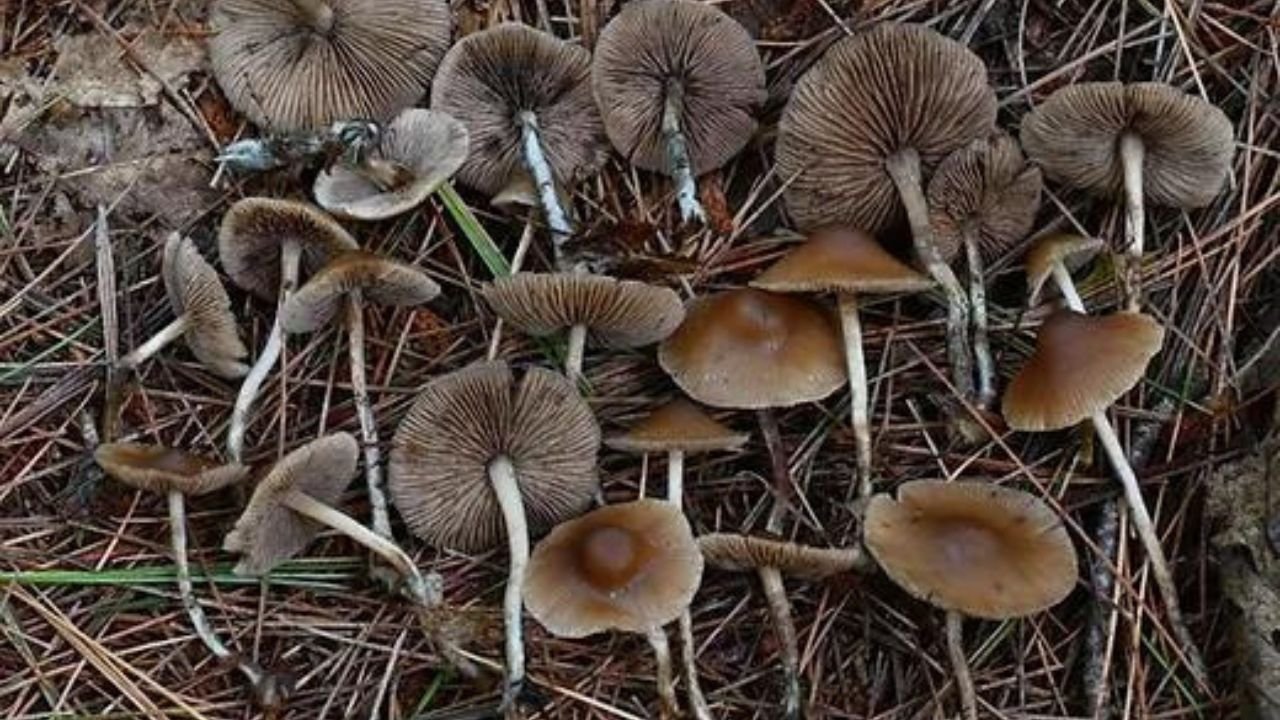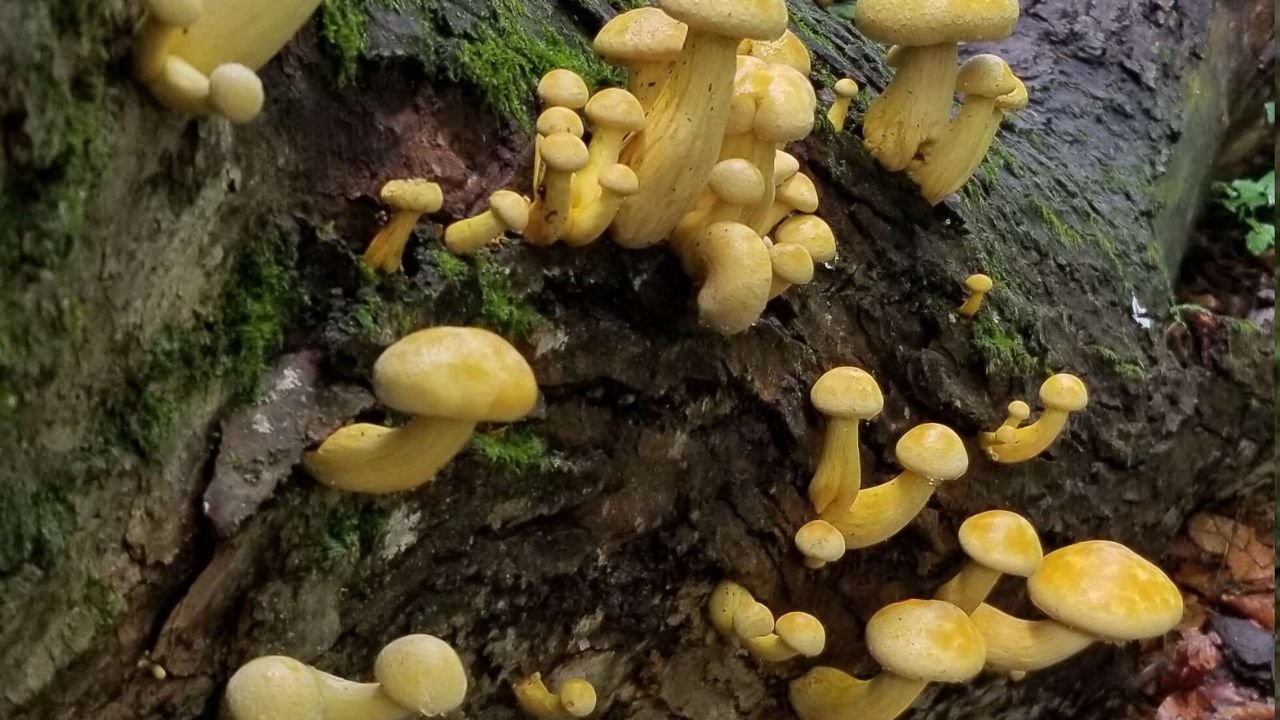Magic Mushroom
Psilocybe Caerulipes: A Closer Look At the Blue-Footed Mushroom
Psilocybe caerulipes, commonly known as the blue-footed mushroom, is a fascinating member of the Psilocybe genus, renowned for its distinctive blue-staining features. This species is recognized for its psychoactive properties, owing to the presence of compounds like psilocybin and psilocin. In this comprehensive exploration, we delve into the taxonomy, morphology, distribution, ecology, and cultural significance of Psilocybe caerulipes, shedding light on psilocybe caerulipes pennsylvania unique characteristics and the broader context of psychedelic Afghan Kush fungi.
A Brief Overview of Psilocybe Caerulipes
Psilocybe caerulipes, commonly known as the “blue-foot” mushroom, is a species of psychedelic fungi found in the eastern United States. Recognizable by psilocybe caerulipes tennessee distinctive blue-staining base, this mushroom contains psychoactive compounds such as psilocybin and psilocin, inducing altered states of consciousness when ingested. Typically found in woodlands, especially near riverbanks and streams, Psilocybe caerulipes form mycorrhizal associations with hardwood trees.
Though less studied than some other psychedelic fungi, it has gained popularity among enthusiasts for its unique characteristics and potential therapeutic properties. Caution is advised, as accurate identification is crucial to ensure safe recreational or psilocybe caerulipes where to find medicinal use.
Taxonomy and Classification
Taxonomy and Classification are integral components of biology and information sciences, aimed at systematically categorizing and organizing living organisms or data. In biology, Taxonomy involves identifying, naming, and classifying species based on shared characteristics, establishing a hierarchical system to reflect evolutionary relationships. In information sciences, how to identify psilocybe caerulipes refers to the systematic arrangement of data into structured categories for efficient retrieval and analysis.
Both disciplines rely on hierarchical structures, defining relationships and providing a framework for understanding diversity in biology or managing information in various fields. Taxonomy and Classification serve as essential tools for scientific research, education, and knowledge organization.
Kingdom Fungi: An Overview

The blue-footed mushroom belongs to the vast kingdom of Fungi, a diverse group of organisms with crucial ecological roles. We provide a brief introduction to the fungal kingdom, emphasizing the importance of fungi in nutrient cycling and symbiotic relationships.Within the kingdom of Fungi, Psilocybe is a genus encompassing numerous species with psychoactive properties. We explore the key characteristics of the Psilocybe genus, focusing on the chemical compounds responsible for the hallucinogenic effects observed in certain species.
Psilocybe Caerulipes: Taxonomic Details
Delving into the specifics of Psilocybe caerulipes, we discuss its taxonomic Classification, including its order, family, and other relevant details. This section provides a foundational understanding of the blue-footed mushroom’s place in the fungal kingdom.
Morphology and Physical Features
Morphology and Physical Features” explores the structural characteristics and external attributes of organisms, providing insight into their form and function. This multidisciplinary field encompasses the study of anatomical structures, shapes, and sizes, shedding light on the adaptation and evolution of living beings. From the intricate details of cellular arrangements to the macroscopic aspects of body plans, this discipline delves into the diverse manifestations of life.
By examining the morphology and physical features of organisms, scientists gain valuable knowledge about their ecological roles, evolutionary history, and interactions within the complex tapestry of the natural world.
Cap and Stem
Examining the physical attributes of Psilocybe caerulipes, we describe the cap and stem structures, highlighting the color, size, and texture variations observed in different stages of the mushroom’s development.The arrangement of gills on the underside of the cap and the distinctive spore print contribute to the identification of Psilocybe caerulipes. We explore the functional significance of these structures and their role in the mushroom’s reproductive process.
Blue Staining: A Unique Characteristic
One of the most intriguing features of Psilocybe caerulipes is its propensity to exhibit blue staining when bruised or damaged. We delve into the biochemical processes behind this phenomenon and discuss its potential evolutionary where can i find psilocybe caerulipes significance.
Distribution and Habitat

The species’ distribution and habitat are critical components of its ecological profile. This encompasses the geographical range where the species can be found, spanning continents, countries, or specific regions. Simultaneously, the habitat delineates the environmental conditions necessary for its survival, including climate, vegetation, and topography.
Understanding distribution aids in conservation efforts, while habitat analysis reveals dependencies and interactions with the ecosystem. Factors such as temperature, precipitation, and substrate composition influence the species’ adaptation and persistence. Exploring distribution and habitat dynamics is fundamental for comprehending biodiversity patterns, managing ecosystems, and implementing effective conservation strategies.
Geographic Range
Psilocybe caerulipes is distributed in specific regions of North America. We explore the geographic range of this mushroom, considering factors such as climate, soil types, and vegetation associated with its presence. Understanding the ecological niche of Psilocybe caerulipes is essential for both enthusiasts and researchers. We discuss the mushroom’s preferred habitat, including forest types, soil conditions, and mycorrhizal associations.
Ecology and Life Cycle
Ecology and Life Cycle” explores the intricate relationships between organisms and their environments, emphasizing the interconnectedness of ecosystems. This interdisciplinary field examines the dynamic interactions that shape the balance of life on Earth, from the smallest microorganisms to complex ecosystems. Investigating the life cycles of organisms reveals essential processes such as reproduction, growth, and adaptation, highlighting the delicate equilibrium necessary for sustainable psilocybe caerulipes maine coexistence.
This exploration delves into the impact of human activities on ecological systems, fostering awareness of environmental conservation and promoting responsible stewardship. Through the lens of ecology and life cycles, we gain insights into the resilience and vulnerability of our planet’s diverse life forms.
Mycorrhizal Relationships
As with many mushrooms, Psilocybe caerulipes engage in mycorrhizal associations with plant roots. We examine the ecological importance of these symbiotic relationships, emphasizing their role in nutrient exchange and ecosystem stability.A detailed exploration of the life cycle of Psilocybe caerulipes, from spore germination to the formation of mature fruiting bodies, provides insights into the reproductive strategies and temporal dynamics of this species.
Psychoactive Compounds and Effects
Psychoactive Compounds and Effects” explores substances that alter brain function, mood, and perception. From cannabinoids in cannabis to hallucinogens like psilocybin and LSD, these compounds interact with the central nervous system, producing diverse psychological effects. Users may experience euphoria, altered perception of time, enhanced sensory perception, or profound introspection.
However, misuse can lead to adverse effects, including anxiety, hallucinations, or addiction. Understanding the intricate interplay between psychoactive compounds and the human mind is crucial for informed decision-making and responsible use in medical, recreational, or therapeutic contexts.
Psilocybin and Psilocin
The psychoactive properties of Psilocybe caerulipes are attributed to compounds such as psilocybin and psilocin. We delve into the chemical structures and biosynthetic pathways of these compounds, explaining their effects on the human brain.The use of Psilocybe caerulipes and other psychedelic mushrooms has a rich cultural history. We explore the indigenous and historical contexts of these mushrooms, highlighting their significance in religious, spiritual, and recreational practices.
Conservation and Legal Status
This section delves into the vital aspects of preserving biodiversity and protecting endangered species. It outlines the measures, strategies, and initiatives employed to safeguard ecosystems and their inhabitants. It also gives a summary of the international accords, rules, and legislative frameworks that control environmental preservation.
By examining the legal status of various species and ecosystems, this segment sheds light on the global commitment to sustainable practices and biodiversity conservation. It serves as a comprehensive resource for understanding the intricate balance between human activities, legal frameworks, and the imperative need for environmental preservation.”
Threats to Psilocybe Caerulipes
Examining the potential threats to the blue-footed mushroom, including habitat loss, climate change, and over-harvesting, allows us to address conservation concerns. We discuss the importance of preserving these fungi and their ecosystems.The legal status of Psilocybe caerulipes and other psychedelic mushrooms varies globally and within different jurisdictions. We provide an overview of the legal landscape, considering recent developments and debates surrounding the decriminalization and medical use of psychedelic substances.
Conclusion
In conclusion, Psilocybe caerulipes, the blue-footed mushroom, offers a captivating subject for study, combining elements of taxonomy, ecology, chemistry, and cultural significance. This exploration provides a comprehensive understanding of the mushroom’s place in the natural world and its profound impact on human societies throughout history.
As we navigate the complex terrain of fungi, the blue-footed mushroom stands out as a symbol of both biological diversity and the intricate relationships between nature and consciousness.
FAQ:
What is Psilocybe Caerulipes?
Psilocybe caerulipes is a species of psychedelic mushroom containing the psychoactive compounds psilocybin and psilocin.
Where is it Found?
Commonly found in eastern North America, particularly in deciduous forests, growing on decaying hardwood logs and debris.
What are its Effects?
Consumption can induce hallucinations, altered perceptions, and euphoria. Effects vary, and users should be cautious.
Is it legal?
Psilocybe caerulipes and its psychoactive compounds are illegal in many jurisdictions. Check local laws before cultivation, possession, or use.
How to identify Psilocybe Caerulipes?
Recognized by its distinctive blue-staining reaction when bruised, along with other physical characteristics like cap shape and color.
Are There Health Risks?
Inappropriate use may lead to adverse effects; caution and responsible use are essential. Consultation with a healthcare professional is advised.

